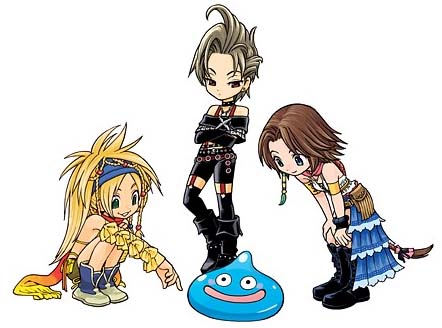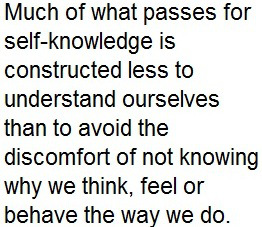Last updated on September 23, 2016
- Part 1 – Origins and Buddhism
- Part 2 – Neon Genesis Evangelion
- Part 3 – Hideaki Anno and The Culture Gap
- Part 4 – Final Fantasy and Psychological Deception
for you have been born again not of seed which is perishable but imperishable, that is, through the living and enduring word of God.
– 1 Peter 1:23
So let’s talk about Japanese role-playing games for a second.
Final Fantasy and Dragon Quest created the “genre” as it exists today. Each took elements of Western CRPGs like Wizardry while adding their own unique flavor to the mix. Dragon Quest recreates the Medieval European stylings in an anime mold out of Akira Toriyama’s mind, while Final Fantasy took notes from syncretistic practices and Yoshitaka Amano’s beautiful flowing qualities. The results of each resulted in both a competition and a boom in the Japanese video game market.
Anyone with a cursory knowledge of either franchises knows that, for years, Squaresoft (Final Fantasy) and Enix (Dragon Quest) turned into bitter rivals for the burgeoning marketspace. Heck, Dragon Quest’s grindy game mechanics turned into a national obsession, and Japanese legislators actually forced Dragon Quest games to come out only on Sundays. Otherwise, you’d find yourself without any workers to work. Final Fantasy emerged as a surprise hit (hence the name signaling Squaresoft’s final game if it wasn’t an unexpected success) and a rival, the trendy Pepsi to Dragon Quest’s traditional Coke. Dragon Quest, though new at the time of its release, slowly delved into iterative tradition, each new installment only slightly tweaking the overall game while changing the plot slightly with new characters. Final Fantasy, on the other hand, continued to experiment and enhance all elements of its design, trying to capture its audience with dazzling sights, intense battles, and unorthodox tales.
Just look at the progression: although Dragon Quest continued to sell, Final Fantasy kept reinventing itself. Crazy risks with leveling systems (FFII), job systems (FFIII), Linear and exciting stories (FFIV), enhanced remakes of previous entries (FFV, basically), and an operative narrative (FFVI) came in opposition to…the same exact game, over and over again. I harbor no hatred for Dragon Quest, but we can admittedly say that each game plays identically to the next. In that sense, each represents a particular facet of Japanese culture: the traditional and the radical. Each battled in the marketplace of their pop culture, and each keeps their own audience (with some crossover). However, one game would change all that.
That game, if you lived under a rock since 1997, was Final Fantasy VII (which I already talked about at great length). Although we see Hironobu Sakaguchi’s influence on the game and its story, to say that it takes zero notes from Neon Genesis Evangelion would require an incredibly shortsighted interpretation. From Cloud’s identity and abandonment issues (think of the SOLDIER Zack and you’ll see it) to the constant comparison to Sephiroth, Cloud may as well represent Shinji Ikari. Sephiroth contains those same feelings, except his true indentify causes him to freak out and unify everyone with himself through meteor and Jenova. People like Cloud, yet he doesn’t admit it and so ends up in mystical psychological states through Mako poisoning. Seriously, the parallels and liberal plagiarizing seems cribbed directly from it.
On the other hand, Final Fantasy VII can show us the ending of the story due to an expanded budget (Neon Genesis Evangelion does this later, only after the series exploded in popularity, but it’s strange and weird). That ending, for all intents and purposes, simply shows the results of Cloud’s psychological realizations and the unity of humans into…death, I guess, through a return to nature? That basically amounts to the same idea as in Neon Genesis Evangelion, so it’s not that far from the cultural zeitgeist on display. Unsurprisingly, Final Fantasy VII sold in huge numbers, both capitalizing on youth culture and throwing its own ideas into the mix.
But, something strange happened: Final Fantasy VII sold to an American audience as well. You could account for this with the MASSIVE advertising campaign, which threw every CGI cutscene in the game on display for the world to see and become incredibly confused and/or excited. Everyone knew about it, and YOU needed to play it. It’s not a stretch to assume that a similar youth culture of depression and anxiety emerged within America during the prosperous 1990s, and Final Fantasy VII inadvertently tapped into a similar vein. Final Fantasy, through appealing to the newly formed Neon Genesis Evangelion and newly crowned American audience, surpassed Dragon Quest in sales and turned into a monstrous giant in the games industry.
So they kept iterating, kept going for crazy (FFVIII), sometimes stopping to integrate the past with their future (FFIX), eventually trying to make a real love story with similar elements (FFX), then making an MMO (FFXI and XIV), a game that shouldn’t even be called a Final Fantasy (FFXII and Ivalice, yep) and then a recreation of FFVII without understanding what was great about it (FFXIII). In all these, and every game surrounding them in the genre at the time, emerged that similar narrative of self-authentication, suffering, and eventual acceptance which led to saving the world. Xenogears represents the pinnacle of that cribbing, being nearly identical to Neon Genesis Evangelion in many way with its use of Christian symbolism to understanding the self in Fei Wong.
And yet, each new generation of Japanese people do not tire of this same narrative, over and over again. It reappears in new forms, and people lap it up. Neon Genesis Evangelion continues to re-emerge in various films and anime never remained the same after it release. The same goes for Japanese role-playing games: never did they sprout out of that mold, with rare exceptions. Our current American culture, though, feels right at home with themselves and their lifestyles: the era of the “emo” passed for pop culture, and with it JRPGs and anime. Japanese companies struggled ever since to make sense of this radical shift that sells at home but fails to muster the same enthusiasm in the West.
Our cultural landscape changed, and theirs did not. A simple answer provides a simple solution. Yet, an audience still exists in the West that craves these games, love these stories, and relate to them. Only video game journalists fail to see it. Our critical lens exist only in the realm of Western standards of storytelling, Western standards of art, and Western standards of…well, whether it’s moral to show something in a video game or not. These questions the Japanese do not ask, because they’re not Westerners. This radically changes what, exactly, we say about them. Unless you strive for an objective standard in your journalistic endeavors (and that’s obviously not what we think when we imagine “criticism”), then there’s no way a Western mind will ever fully reconcile a Japanese product without actually being born and raised there.
There’s a primal feeling, an internal reasoning as to why certain people respond one way to a certain thing, while they reject another. Unfortunately, our ability to actually communicate why remains pretty suspect, if modern psychology tells us anything. They call it the “introspection illusion“, the idea that we know our own mental states and why we experience things the way we do. This remains a common assumption of most people on earth given that, hey, only I can truly know myself, right? Only I can know why I like something, right? Unfortunately, that’s not the case. More than likely, our brains try to come up with a rational, logically deduced answer or, at the least, an explanation to a feeling that you cannot explain. At the same time, your self-image comes into play by nature of that very explanation. The answer in that format turns into a whole lot of made-up stuff that kinda conveys your “feelings”, but not really. You crafted something that you can reasonably believe, not necessarily the truth of the matter.
I suppose that puts this whole website’s critical enterprise into question, doesn’t it? Am I projecting a particular image to you, the reader? I would hope not. I would like to think that my brain directly communicates with yours, but I know better than that; whatever you read comes with your own interpretations attached, your agreements and disagreements tainted, as much as my own mind, by all the preconceived notions and biases ever present in our daily lives without a single mention as to their influence.
But, as far as what I do like, I know what I like and that becomes obvious just by reading it. I know what you like by your response to it. The relative specificity, however, remains ever clouded by a sinful nature and the psychological neuroses that come along with it. In fact, our justifications for what we consume and what we like experience two different fatal flaws: first, that they’re made up, and second, that our interests come primarily from self-image. Don’t ignore that businesses and producers daily appeal to your sentiments and your self-image; when everyone’s in the same income bracket with the same products of consumption (rather than construction), we can only compete in what we consume (mine is better than yours!). So when someone tells me “I don’t like JRPGs because they don’t appeal to me anymore; I’m an adult, I’ve grown up”, that’s simply hogwash. Self-image and consumer culture work hand in hand, and I would not expect otherwise from our sinful nature.
We can, however, cultivate cultural discernment as Christians. We must rely less on our brains, our introspection that naturally deceives us, and more upon the Holy Spirit and the Word of God. Only there can we avoid deception and avoidance of real conflicts. The Bible gives us something to stand upon apart from ourselves, the Church as a natural extension of the concept in human relationships. No one says that part’s easy, but it is necessary. Richard Clark, editor-in-chief of Christ and Pop Culture, agrees:
The most recent issue of Christ and Pop Culture Magazine is all about that inevitable heavy-lifting that every Christian must embrace. It goes beyond pointing out what is right and wrong and extends to considering purpose, intent, pomp, circumstance, and the manner in which grace and sin interact; messy, God-acknowledging ways that simultaneously proclaim and obfuscate the truth. In this fallen world, even God-honoring, Christ-centered, “Christian” works will be marred by the repercussions of the fall. Conversely, dark, disturbing, offensive, “worldly” works will praise God just as rocks, oceans, and preachers do.
Perhaps the main reason the evangelical church has such a hard time with cultural discernment is the uncomfortable grey areas that so often result from paying attention to and truly engaging a work. Evangelicals have always been a people of clarity, for good reason. But if we abandon the neutral colors present in God’s creation, even while affirming the bold reds and blues, we’ll inevitably find ourselves missing out on the full beauty available to us.
We need awareness of our own psychological misgivings so we can work around them and avoid tainting everything with our inclinations. That remains primary in all cases.
Therein lies the examination of the “emo” Japanese games. It was never really that at all. It was just a label. Let’s avoid those, shall we?


